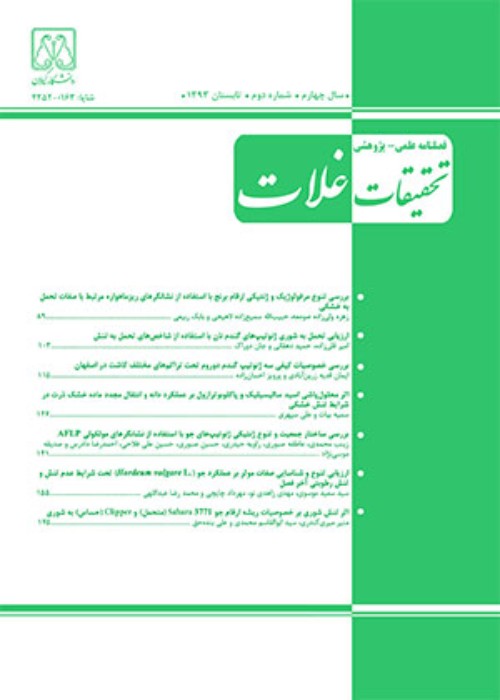Study on bread wheat (Triticum aestivum L.) growth stages using growing degree day index under early and late planting date in Kermanshah
To investigate the effect of planting date on grain yield and phenological stages of some new bread wheat cultivars, a split plot experiment was conducted as randomized complete block design with three replications in Eslamabad-e-Gharb Agricultural Research Station, Kermanshah, Iran, during 2013-2015 cropping years. The studied factors included planting date at four levels (early, timely, late and very late) and wheat cultivar at six levels (Chamran-2, Parsi, Pishtaz, Bahar, Sirwan and Sivand) which were considered as main- and sub-plots, respectively. Based on the results, early, late and very late planting dates caused a decrease in grain yield by 19.34, 30.34 and 44.40 percent, respectively. The total growth period of wheat cultivation in early, timely, late and very late planting dates were 244, 222, 204 and 181 days, respectively. In early planting date, the traits of number of days to first leaf appearance, tillering, single ridge, double ridge, terminal spikelet and stem elongation was decreased, but after stem elongation stage, the studied cultivars had the highest number of days to flag leaf appearance, booting, heading, anthesis and physiological maturity. The cultivars "Bahar" and "Sirwan" had the highest and lowest values (2317 and 2155 growing degree days, respectively) during the growth period at all planting dates. Cultivar “Parsi” with 934 units in stem elongation and 807 units in grain filling period, had the highest and lowest growing degree days, respectively, and therefore due to early maturity (heading) and fine grain filling capability, had the highest grain yield (8097 kg.ha-1) in a total of four planting dates. Overall, the results of this study showed that early and late planting dates significantly reduced grain yield compared to timely planting in all studied cultivars. Therefore, planting in mid-November and using wheat cultivars such as "Parsi" and "Sirwan" can be recommended for similar climates of the studied region in this research.
- حق عضویت دریافتی صرف حمایت از نشریات عضو و نگهداری، تکمیل و توسعه مگیران میشود.
- پرداخت حق اشتراک و دانلود مقالات اجازه بازنشر آن در سایر رسانههای چاپی و دیجیتال را به کاربر نمیدهد.


